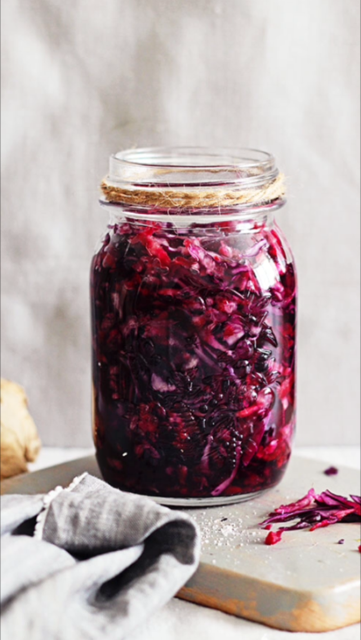[vc_row][vc_column width=”2/3″][vc_column_text]
Taking probiotics in a capsule can end up expensive. Our need for probiotics will always be there so the best way to get them is to incorporate them into our daily routine and diet in the cheapest and most effective way possible – fermented foods.
Fermented foods, they’re all the rage right now and so they should be. The benefits of these wonder foods are endless. They are packed with vitamins, minerals, enzymes and most importantly probiotics. The best thing about them though is that you can create them easily and inexpensively in your own home.
There are many reasons we need probiotics on a regular basis, the biggest being that there are so many things that wipe out our good gut bacteria. Things such as sugar, medications particularly antibiotics, coffee, alcohol, processed foods and even stress. These things are literally part of most peoples day, so we end up doing and ingesting lots of things that don’t support a healthy gut microbiome, we forget about the good guys and supporting them.
Around 80% of our immune system resides in our gut. It’s obvious then that we need to look after this part of our body. Not to mention that a happy gut equals a happy mind.
Fermenting foods has been around for hundreds of years and they have been slowly making their comeback over the last decade. People used to ferment their foods so they would last longer without refrigeration which wasn’t available hundreds of years ago. Unfortunately with the introduction of refrigeration into our homes, the need for fermented foods slowly waned.
It’s really important to either make your own kraut and/or buy from someone who has ie at your local health shop or farmers market, but beware even some health food brands are not home made (you can usually tell by the label). Commercial processing and heat treating removes all goodness from the sauerkraut so it becomes a side dish for taste only with no medicinal benefits.
Here is a basic recipe for making your own, once you have it in the bag you can get creative adding different spices and create different tastes. The main ingredient is cabbage but I love to use beetroot, carrots and ginger as well.
you’ll need:
- 1 head of organic cabbage red and/or white
- 1 tablespoon of good quality sea salt or pink himalayan salt
- some cumin or fennel seeds (or chili, paprika etc)
equipment:
- around 4-6 glass jars with lids
- a big bowl for mixing
- food processor (optional)
- pestle (optional)
what to do:
wash your hands, jars, lids and bowl in hot soapy water, rinse and dry. Put the jars and lids into the oven on 100 degrees celcius for about 30-40 minutes to sterilise. Set aside to cool.
Chop up the cabbage or put into a food processor – you don’t want it too small or thin so don’t process it for too long. I actually don’t find it a lot faster or easier in the food processor so if you don’t have one don’t worry, a knife is fine. If you’re using carrots and/or beetroot grate these and add everything including the salt and the seeds to the bowl, then get in there with your hands and mix it all up (or use your pestle). The aim is to keep going until you have liquid appearing and your cabbage is starting to wilt.
Stuff the cabbage and other vegetables tightly into the jars, leaving at least an inch at the top for room. You want to make sure the cabbage is completely submerged in brine, so if it’s not covered you’ll need to make some more by adding a ratio of 1 tsp of salt to 1 cup of filtered water and top it up. Put the lids on but don’t do them up all the way as gas will form and it needs room. Another great tip to make sure there is no air hitting the cabbage is to place a bit of cabbage leaf over the top.
Cover the jars with a tea towel and leave for 5-10 days (5 during summer). Keep checking for mould and if you see any of this forming remove it and check the rest of the jar. After this put the lids on properly and leave refrigerated for another week or so. It’s now ready to eat!
tip:
If this is your first time eating sauerkraut, start with a small amount. You’re introducing new bugs to your system that help kill opportunistic pathogens such as candida and other bacteria. You don’t want unpleasant symptoms from the die off. Soon you’ll be able to have a couple of tablespoons a day.
[/vc_column_text][/vc_column][vc_column width=”1/3″][stm_sidebar sidebar=”2600″][/vc_column][/vc_row]


Trackbacks/Pingbacks